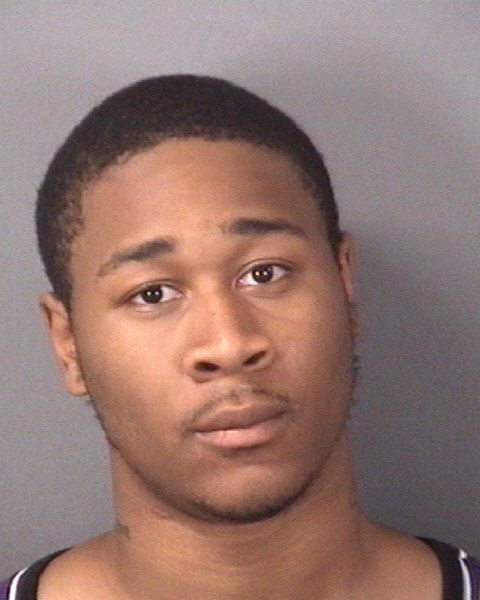Isiah Greene’s murder retrial has weaknesses on both sides
A jury may once again have a hard time judging whether or not alleged killer Isiah Greene is guilty of murder.
Prosecutors say Greene shot and killed 24-year-old city man Quaadir “Ace” Gurley in the early morning hours of July 21, 2013. The slaying occurred at Trenton’s Donnelly Homes housing complex.
The state previously tried Greene on murder charges in an October 2015 criminal trial that ended in a hung jury. The state brought the case to a retrial earlier this month in hopes of securing a conviction this time around.
Prosecutors have circumstantial evidence linking Greene to the scene of the murder and have made reasonable inferences to conclude that Greene shot himself in the foot while shooting Gurley multiple times with a .40 caliber semiautomatic handgun.
Greene, 23, denies shooting himself or Gurley. He took to the witness stand in his own defense last week and said he was walking in the courtyard of Donnelly Homes and got low on the ground upon hearing gunshots. Realizing he was shot, Greene in sworn testimony said he got up and hopped into an occupied vehicle that drove him to the area of Sanhican Drive.
Assistant Mercer County Prosecutor Jim Scott said Greene went to Sanhican Drive and made a “fake 911 call to police” to falsely report he was shot on Sanhican Drive, saying Greene did that “so that he is not tied to the murder of Quaadir Gurley.”
Case weaknesses
Police have not found the murder weapon in the case. If Greene was the triggerman, that would mean the people who helped him flee the scene in a motor vehicle were accessories to the violent crime. But police have not made any other arrests in connection with the homicide of Gurley.
As such, there are no co-defendants or cooperating criminals testifying against Greene. No co-conspirator has pointed the finger at Greene.
The state has one eyewitness to the murder, Lalisa Thompson, who testified to seeing a dark-skinned man wearing a white tank top and armed with what she believed to be a handgun. She said she did not actually see the gunman firing any shots. Greene is an African-American with relatively light skin, although he conceded his skin generally tans a darker shade in the summer compared with the winter.
Prosecutors say Greene fired 10 shots and that one of the shots struck himself in the foot and that eight struck Gurley in the body. Prosecutors have not presented a motive in the case — an explanation for why Greene allegedly wanted Gurley dead — but have said they have enough circumstantial evidence that proves beyond a reasonable doubt that Greene is guilty of murder and weapons offenses.
Greene testified he did not know Gurley, a street-tough father who leaves behind six children, but said he had heard of him.
Defense weaknesses
Greene said he was hanging out with three friends and drinking alcoholic beverages on Highland Avenue when his crew decided to drive over to Donnelly Homes to get a designated driver who was supposed to take them to a Philadelphia nightclub. According to his sworn testimony, Greene got out of the parked vehicle off Rossell Avenue and was going to knock on the front door of the designated driver’s home when he heard gunshots. One of those shots struck him in the foot, he said.
But Greene’s defense attorney Mark Fury has not called any witnesses to corroborate his client’s story about the botched nightclub plan. Greene has admitted to previously lying to police about the shooting — saying he falsely reported he was shot on Sanhican Drive because he did not want to be called as a witness in the shooting that killed Gurley.
Medics transported Greene from Sanhican Drive to Capital Health Regional Medical Center to treat his gunshot wound, which was not considered life-threatening. Greene could have arrived at the hospital much sooner if his crew drove him from Donnelly Homes to the nearby trauma center. Instead, his crew dropped him off at Sanhican.
Investigators found Greene’s blood at the murder scene. Fury and Greene suggested police may have tampered with evidence or manipulated the scene in a way to make it appear as if Greene committed the violent crime. That argument, however, is highly speculative in nature as no evidence has been presented to prove any evidence-tampering occurred. Fury said investigators have conducted “unfortunately sloppy police work at the scene,” but several police officers have testified in the case about the thoroughness of their investigation.
Under cross-examination, Greene became defensive in answering questions posed to him by the prosecution, repeatedly accusing a prosecutor of misinterpreting or taking his statements out of context. “Unlike every other witness in this case, the defendant was excitable, evasive and combative,” Assistant Prosecutor Scott told the jury in closing arguments. “There is a complete lack of corroboration to what the defendant told you.”
Legal proceedings
Greene’s murder retrial began Jan. 5. After several days of witness testimony and evidence being submitted into the record, the 12-member jury began deliberating over whether the defendant is guilty or not guilty.
The jury failed to reach a verdict last week but is scheduled to continue deliberating Tuesday morning behind closed doors at the Mercer County Criminal Courthouse.
Superior Court Judge Anthony Massi is presiding over the case.








